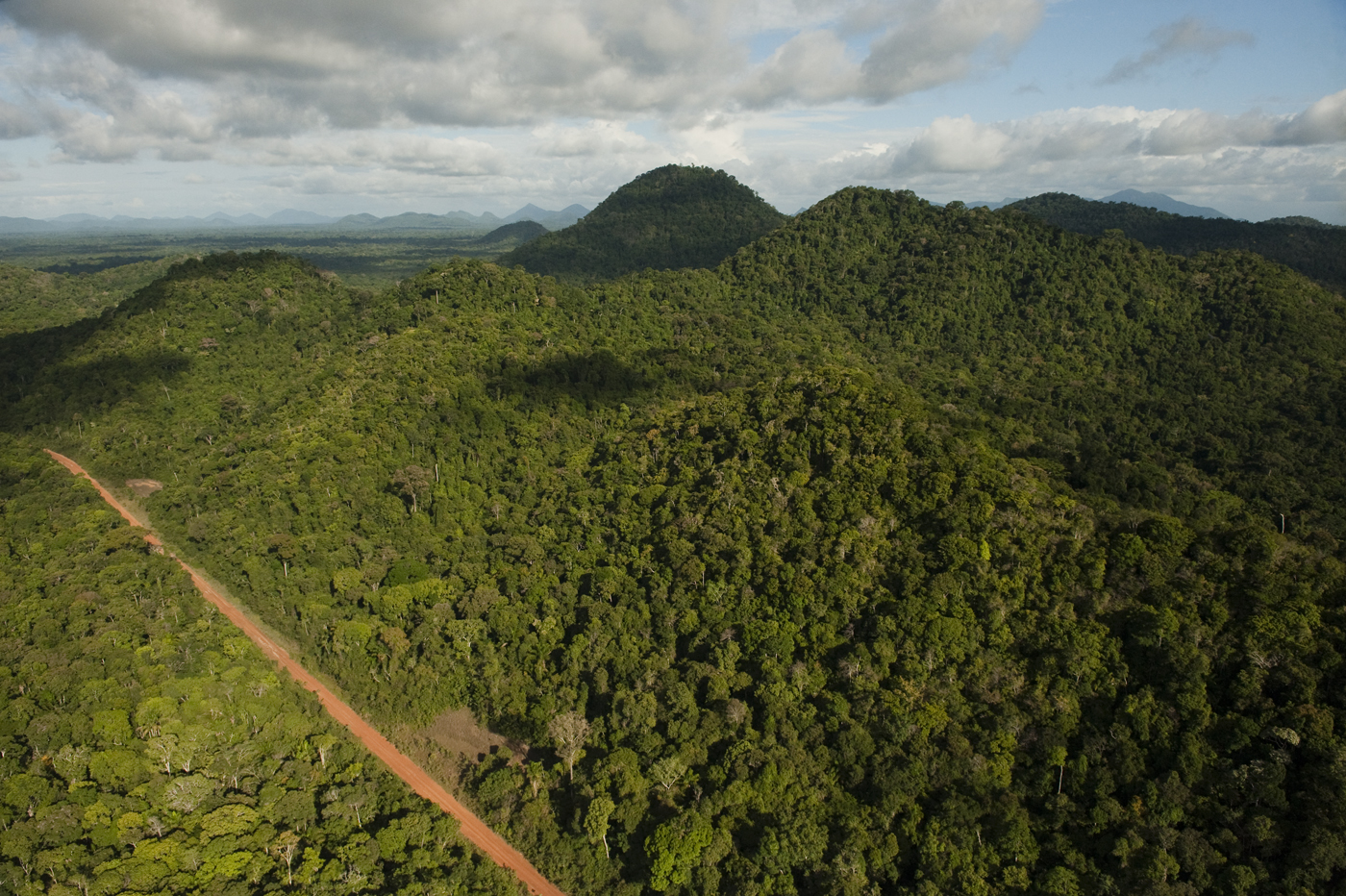 Vishani@newsroom.gy
Vishani@newsroom.gy
Years of monitoring and verification has confirmed that Guyana has the world’s second-highest level of forest cover – some 85 per cent of the country’s landmass -and as early as this year, the country is hoping to earn millions to keep its forest standing.
This is according to Kevin Hogan, an advisor who works in the Office of the President, who spoke on Guyana’s carbon credit pursuits on Thursday at the International Energy Conference in Georgetown.
A carbon credit is a kind of tradeable permit or certificate that represents the removal of a certain amount of carbon dioxide from the environment. Since carbon dioxide is the principal greenhouse gas that harms the environment, it is tracked and traded like any other commodity, and hence the name carbon market.
And what Guyana is hoping to do, as it did before with Norway, is market these credits to countries or companies. This would, essentially, mean that the countries or companies would pay Guyana to keep its forests intact.
First, however, Hogan explained that these credits must go through an international certification process. Already, though, Guyana has been able to estimate the value of these forests by verifying the volume of intact trees and the amount of atmosphere-harming carbon dioxide that they suck in.
 </p>
<p>” data-medium-file=”https://newsroom.gy/wp-content/uploads/2021/10/NORWAY-300×208.jpg” data-large-file=”https://newsroom.gy/wp-content/uploads/2021/10/NORWAY.jpg” loading=”lazy” class=” wp-image-126275″ src=”https://newsroom.gy/wp-content/uploads/2021/10/NORWAY.jpg” alt=”” width=”561″ height=”390″ /><figcaption id=) Flashback to 2009: Dr. Bharrat Jagdeo, who was Guyana’s President at the time, and Norway’s Minister of the Environment and International
Flashback to 2009: Dr. Bharrat Jagdeo, who was Guyana’s President at the time, and Norway’s Minister of the Environment and InternationalDevelopment Erik Solheim, signing an agreement where Norway would provide
Guyana with result-based payments for forest climate services (Photo taken from digital copy of LCDS 2030)
To illustrate the value of Guyana’s forests, Hogan posited Guyana’s trees store three times the amount of gas emissions than the United Kingdom (UK) has reduced since about 1990. And he pointed out that he has spent massive sums of money to reduce these emissions.
“If we lost a third of Guyana’s forests… that would wipe out all those trillions and trillions of dollars that the UK has (spent) over the years,” Hogan said.
Cognisant of this, the sale of carbon credits is now an integral part of Guyana’s low carbon development efforts, more so since the country has been preserving its forests for years, only ever receiving about US $212.5 million through the 2009 Guyana-Norway partnership.
Now, Guyana is looking for others, whether countries or companies, who want to offset the harmful gases their industries generate by paying Guyana to keep its forests standing.
“We will see in the next few months whether the credits get certified and whether the market is there,” Hogan said.
The certification process could be completed by July this year and the country could start marketing those credits as outlined in the country’s revised Low Carbon Development Strategy (LCDS).
 Pradeepa Bholanauth, the Senior Director for Climate and REDD+ at the Ministry of Natural Resources
Pradeepa Bholanauth, the Senior Director for Climate and REDD+ at the Ministry of Natural ResourcesPradeepa Bholanauth, the Senior Director for Climate and REDD+ at the Ministry of Natural Resources, said that Norway offered Guyana about US $5 per tonne of carbon dioxide stored by Guyana’s forests.
Now, she says that price levels could be about US $15 per tonne, or even higher since multiple buyers may be interested.
Guyana’s total forest cover hold carbon in unusually high density (up to 350 tons/hectare) and store some 5.31 gigatons of carbon
And Bholenauth stated, “That valuation of our conserved status will allow us to generate enough revenues to move aspects of the LCDS towards implementation.”
Even as Guyana awaits the requisite certification, the Minister of Natural Resources Vickram Bharrat told the conference on Wednesday that the government has been engaging governments on the sale of these carbon credits.

